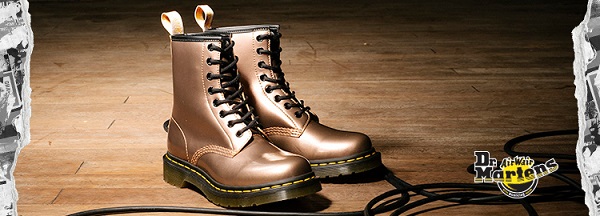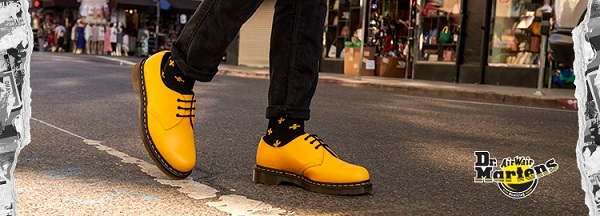Where are Dr. Martens made?
Dr. Martens boots started as a modification of German military boots, beign designed by then field medic Klaus Märtens in 1945 after he injured his foot in a skiing accident.
He used softer leather and replaced the soles with air-padded ones made from tires. Along with his friend Herbert Funck, he first started production of the boots in 1947 using discarded rubber from airfields for the soles.
Mass production first started in 1952 in Munich, Germany, then in 1958 it expanded to the UK after the Griggs company acquired manufacturing rights. That is when the 1460 and 1461 first appeared. They were very cheap at the time, while also being comfortable and sturdy. They quickly became a success with the working class, and then with many counter-cultures, such as ska and punk, and so production quickly increased in the UK.

In the 2000s, after years of great sales and many different models being put into the market, Dr. Martens almost got bankrupt, and due to that they stopped production in the UK and moved it all to China and Thailand. In 2003 they had sold about half as many products as they used to in the 90s. After some successful restructuring and designing and redesigning shoes aiming for a younger audience, they managed to restart production in England (with the “Vintage” footwear, closer to the specifications of the original shoes, as they used to be from the 1960s to the 1990s), while also keeping the Asian manufacturing.
Check out our article if you wish to know how much do Dr Martens weight.
Although Dr. Martens production currently comes from both sources, the products are not the same. They use different materials and, as such as, the products vary in quality:
- Leather: the English version uses a higher-quality leather called Quilon, that is more resistant and durable. However, the Asian one is shinier and softer, meaning it is much easier to break in and looks better;
- Sole: the English sole is harder, and as such, also harder to break in. It also has a darker colour. The Asian one has a lighter colour and is softer, meaning it is easier to get used to and more comfortable from the start;
- Marks/Logos: the English one features “Made in England” on the sole, the insole, and on the tongue of the boot. Asian 1460s have Dr. Martens’s logo on the side, while the English ones don’t;
- Size: the footwear made in Asia tend to be slightly bigger and more confortable;
- Price: the Vintage versions cost more than their modern (manufactured in Asia) counterparts.

These are things to keep in mind when looking to buy yourself some DMs, as it will determine how long they will last. However, if you are a bit short for money, the Asian versions will probably be your best bet, as, although they may be softer and not as resistant, they still retain the usual Dr. Martens quality.
Please check Dr Martens discount code on our website if you wish to save on your purchase.
Leave a Reply